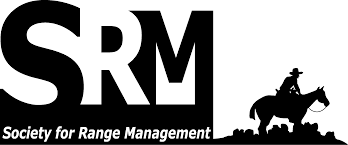Location
The Society for Range Management is the professional scientific society and conservation organization whose members are concerned with studying, conserving, managing and sustaining the varied resources of the rangelands which comprise nearly half the land in the world. Established in 1948, SRM has over 4,000 members in 48 countries, including many developing nations.
SRM’s members are land managers, scientists, educators, students, producers and conservationists–a diverse membership guided by a professional code of ethics and unified by a strong land ethic.
MISSION
Providing leadership for the Stewardship of Rangelands based on sound ecological principles.
VISION
A well-trained and highly motivated group of professionals and rangeland users working with productive, sustainable rangeland ecosystems.
Members:
Resources
Displaying 11 - 15 of 26Natural Regeneration Processes in Big Sagebrush (Artemisia tridentata)
Big sagebrush, Artemisia tridentata Nuttall (Asteraceae), is the dominant plant species of large portions of semiarid western North America. However, much of historical big sagebrush vegetation has been removed or modified. Thus, regeneration is recognized as an important component for land management. Limited knowledge about key regeneration processes, however, represents an obstacle to identifying successful management practices and to gaining greater insight into the consequences of increasing disturbance frequency and global change.
Evaluation of Landscape-Level Grazing Capacity for Domestic Sheep in Alpine Rangelands
Balancing the number of grazing animals with the level of plant resources is a core issue in grazing management. Complete, full-coverage vegetation surveys are often used for this purpose, but these are expensive undertakings. We have presented a method to downscale information from regional sampling surveys by poststratification using a land cover map derived from satellite-based measures of reflectance values. This approach opens new prospects for landscape-level evaluation of productivity.
Long-Term Vegetation Change Provides Evidence for Alternate States in Silver Sagebrush
A key goal in land management is to prevent ecosystem shifts that affect human well-being. Like other types of sagebrush shrublands, large areas dominated by the common but little-studied mountain silver sagebrush may have shifted to a less productive shrub-dominated alternate state under heavy livestock grazing in the 19th century. The goals of this study are to 1) describe long-term vegetation change in a silver sagebrush mountain park and 2) evaluate evidence that these changes constitute alternate states.
Human Infrastructure and Invasive Plant Occurrence Across Rangelands of Southwestern Wyoming, USA
Although human influence across rural landscapes is often discussed, interactions between the native, natural systems and human activities are challenging to measure explicitly. We assessed the distribution of introduced, invasive species as related to anthropogenic infrastructure and environmental conditions across southwestern Wyoming. to discern direct correlations as well as covariate influences between land use, land cover, and abundance of invasive plants, and assess the supposition that these features affect surrounding rangeland conditions.
Understanding Variability in Adaptive Capacity on Rangelands
The art and science of developing effective policies and practices to enhance sustainability and adapt to new climate conditions on rangelands and savannas are typically founded on addressing the “average” or “typical” resource user. However, this assumption is flawed since it does not appreciate the extent of diversity among resource users; it risks that strategies will be irrelevant for many people and ignored, and that the grazing resource itself will remain unprotected. Understanding social heterogeneity is vital for effective natural resource management.


